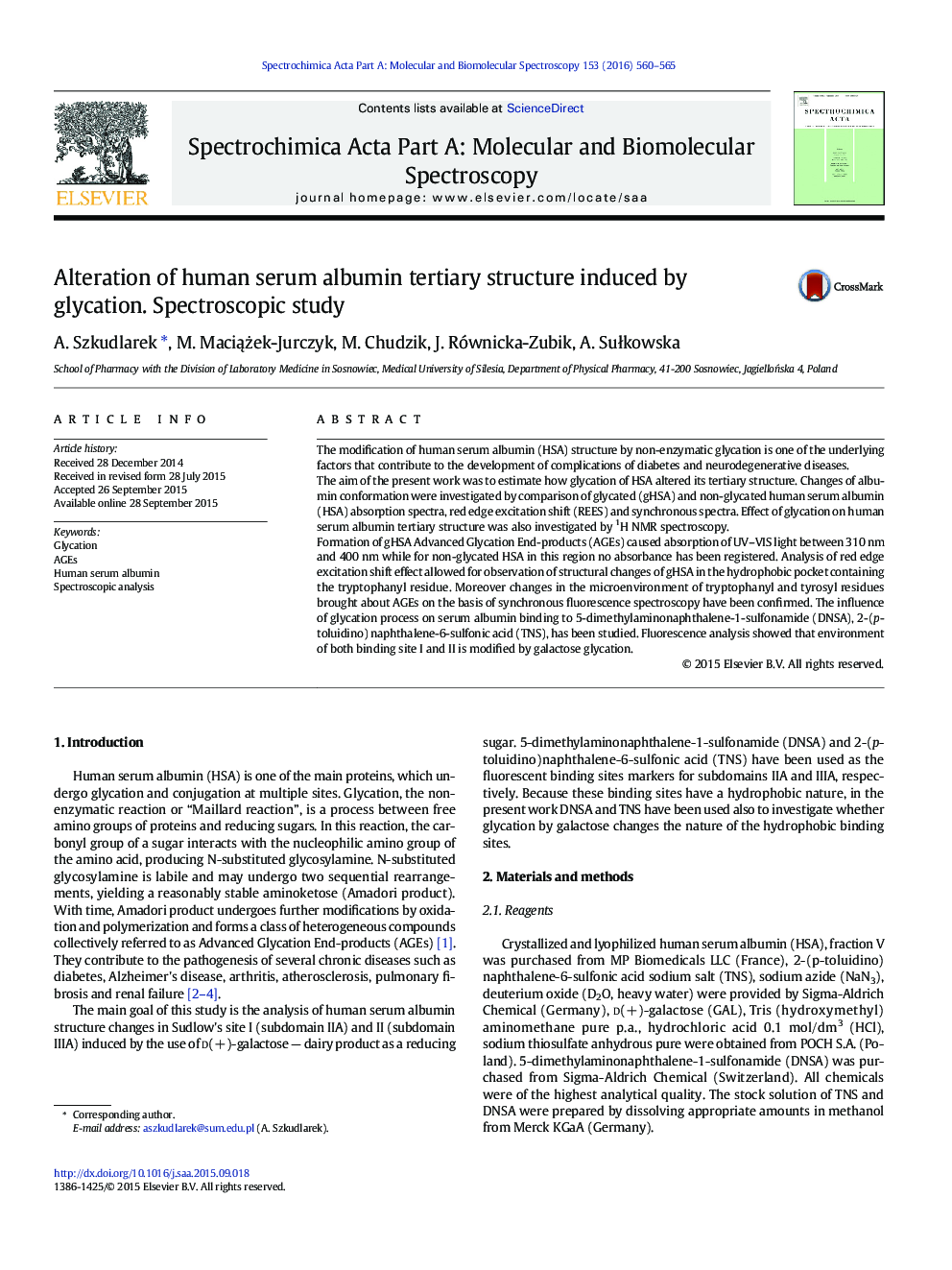| Article ID | Journal | Published Year | Pages | File Type |
|---|---|---|---|---|
| 1228764 | Spectrochimica Acta Part A: Molecular and Biomolecular Spectroscopy | 2016 | 6 Pages |
•We studied changes of HSA tertiary structure by glycation.•We used UV–VIS, spectrofluorescence and 1HNMR spectroscopy.•We showed effect of glycation on albumin binding sites.
The modification of human serum albumin (HSA) structure by non-enzymatic glycation is one of the underlying factors that contribute to the development of complications of diabetes and neurodegenerative diseases.The aim of the present work was to estimate how glycation of HSA altered its tertiary structure. Changes of albumin conformation were investigated by comparison of glycated (gHSA) and non-glycated human serum albumin (HSA) absorption spectra, red edge excitation shift (REES) and synchronous spectra. Effect of glycation on human serum albumin tertiary structure was also investigated by 1H NMR spectroscopy.Formation of gHSA Advanced Glycation End-products (AGEs) caused absorption of UV–VIS light between 310 nm and 400 nm while for non-glycated HSA in this region no absorbance has been registered. Analysis of red edge excitation shift effect allowed for observation of structural changes of gHSA in the hydrophobic pocket containing the tryptophanyl residue. Moreover changes in the microenvironment of tryptophanyl and tyrosyl residues brought about AGEs on the basis of synchronous fluorescence spectroscopy have been confirmed. The influence of glycation process on serum albumin binding to 5-dimethylaminonaphthalene-1-sulfonamide (DNSA), 2-(p-toluidino) naphthalene-6-sulfonic acid (TNS), has been studied. Fluorescence analysis showed that environment of both binding site I and II is modified by galactose glycation.
Graphical abstractFigure optionsDownload full-size imageDownload as PowerPoint slide
